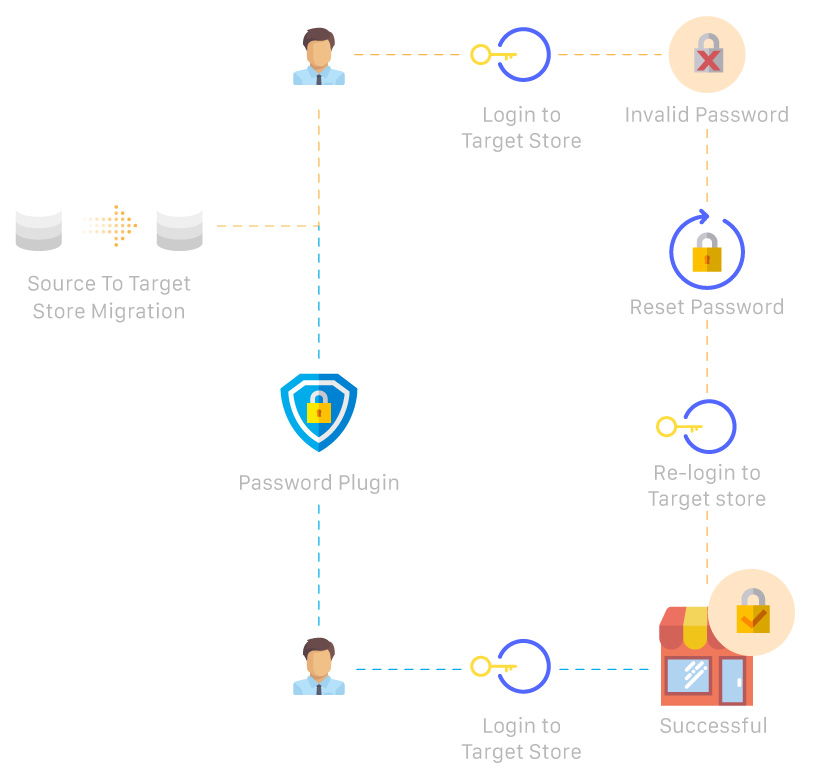Password is similar as the only key to home which preserves mysterious and meaningful things. With different algorithm, users’ passwords in most of different platforms have to be stored in other encryption way. This is primary reason why even professionals cannot ensure to keep all users’ passwords after migration from platform to another. Is it mission impossible?
Just since a pair of years ago, lots of experts or migration providers have publicly affirmed that NO WAY TO TRANSFER CUSTOMER PASSWORD BETWEEN TWO OTHER PLATFORMS. At that time, when other companies seemed to give up, Litextension developers still devoted themselves to research and try variety of methods to “make impossible become possible”. It is obvious that Litextension team’s patience inspired others to pursue the study of password migration. Congrats! Some of them can do finally. However, they have not found the optimized way so password transference is not applied for all platform migration. Password can be integrated just in a few percent of their tools, such as OpenCart to Magento, osCommerce Magento, Magento to WooCommerce, etc. It is risky unless your source store is what they can support. Moreover, they do not show detailed process or explain why and how, so, nothing to ensure customer password be converted and protected.
What about your customers? Imagine one day your key was suddenly lost and then no way for you to go home, how angry would you feel? It is customer’s attitude when backing to your store and realizing that their password disappears. That’s good, you can send email to all of them then explain and guide how to recover their accounts. Some of them may say “No problem” and some (maybe more) do not want to waste time and will never back to your online store anymore.
In fact, Litextension team have had a quick online and offline survey with 1,000 random shoppers and approximately 85% of them show their complete dissatisfaction with this problem. It means that they can come to another better one and you lose a number of potential customers. Remember that the factor influencing directly your business’s prosperity is CUSTOMER. Care their thinking and demands is you are caring your business. It is estimated that after online store migration without customer password integration, revenue goes down about 70% on average. Too risky for your business! Therefore, if your enterprise is really pro now or just tends to be in near future, you won’t prefer that way for sure. So, what e-commerce website owners should do?
Make impossible become possible!Your desire is to satisfy customers, and ours is, too. E-commerce stores owners are our customers. Therefore, even after releasing all migration tools, Litextension team still go on researching and improving tool functions.
How many stores LitExtension can migrate Customers Password?Whatever your source and target stores are, Customer Password migration service by Litextension can support.
- 40+ Migration tools for Magento 1.x and 2.x
- 40+ Migration tools for Prestashop
- 40+ Migration tools for WooCommerce
- 40+ Migration tools for OpenCart
How to migrate password successfully
LitExtension provides free Demo Source and Target store as below. Please select the suitable one and gets started for demo.
List of Demo Target store, Please select the product you are looking for and click to LIVE DEMO.
List of Source store: http://demo3.litexte...om/demosources/
We only support maximum 10 entities for demo password migration, so if you would like more, please delete the old and create new ones. Please ensure that you have read Userguide at https://litextension...igration-tools/ before trying demo
- STEP 1: Create a new user account in our Demo Source Store or Your Source Store
- STEP 2: Start migration
- STEP 3: Log-in by account you have created in the Source Store on Target Store
If you have any more question please don’t hesitate contact us for more support http://litextension.com/contacts/



 Find content
Find content Not Telling
Not Telling





